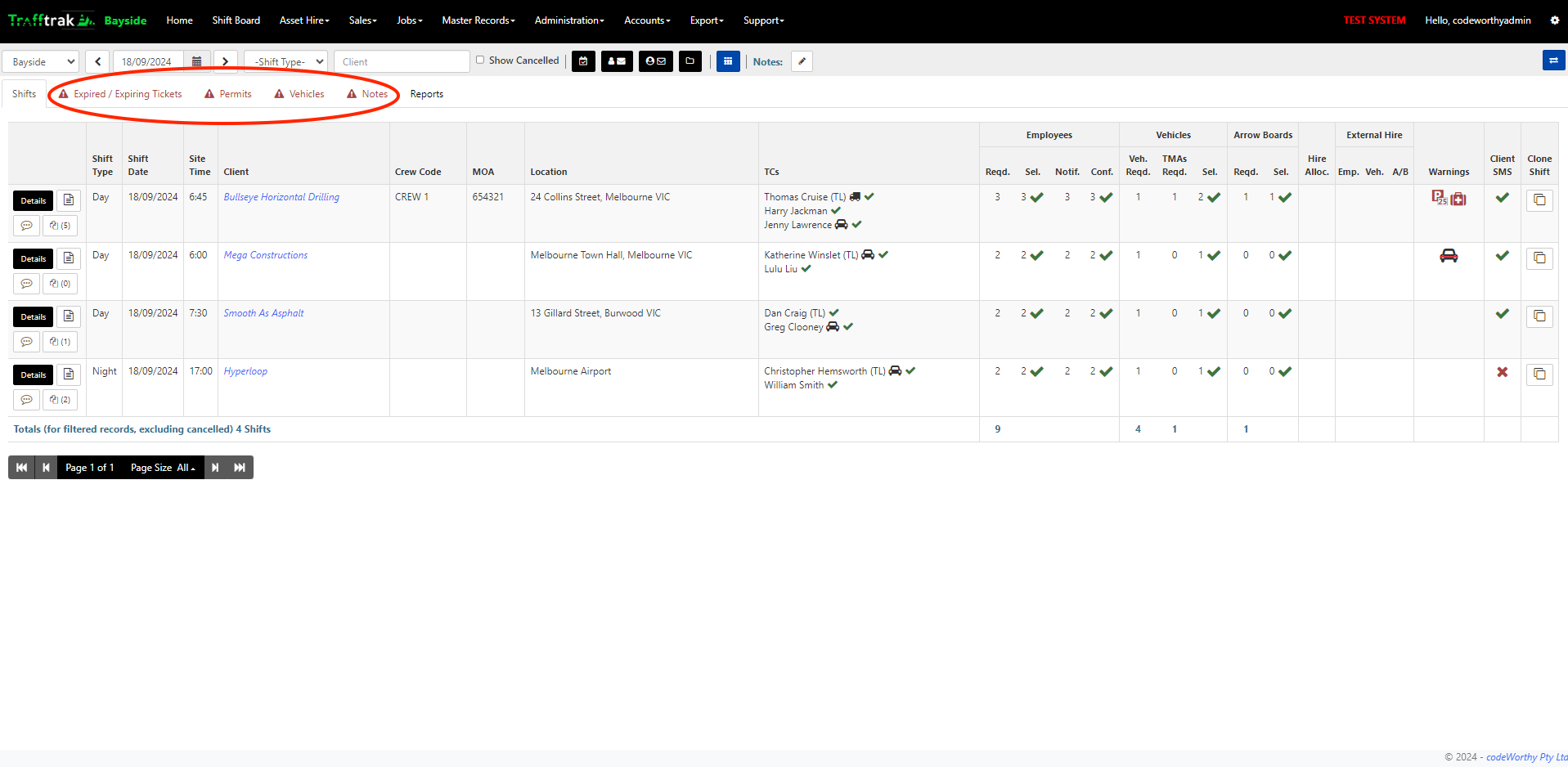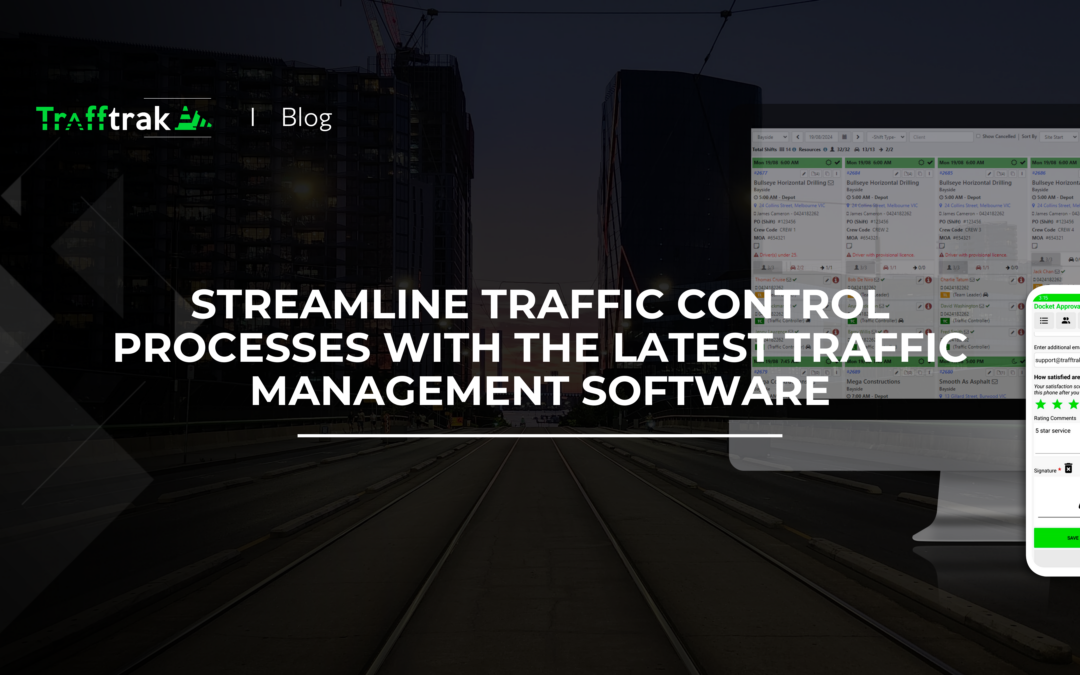Managing traffic control operations efficiently has become increasingly complex due to urban growth and the ever-increasing demands on infrastructure. The key to tackling these challenges lies in adopting traffic management software designed to streamline traffic control processes. In this article, we’ll explore how the latest advancements in technology are simplifying traffic management, reducing costs, and improving overall operational efficiency for traffic control companies.
The Importance of Streamlining Traffic Control Processes
The first step toward improving traffic control is recognising the need to streamline traffic control processes. Manual processes can lead to miscommunications, scheduling errors, and resource misallocation. Over time, this inefficiency can increase operational costs and reduce the overall effectiveness of traffic control companies.
The Consequences of Manual Traffic Control Management
When traffic controllers rely on manual methods to manage operations, several issues can arise:
- Errors in Scheduling: Coordinating teams, vehicles, and equipment becomes cumbersome, often leading to scheduling conflicts or incomplete jobs.
- Resource Inefficiency: Without real-time visibility, it’s hard to allocate resources optimally, resulting in either underuse or overuse of personnel and equipment.
- Increased Costs: Manual processes require more administrative staff, leading to higher overhead costs that could otherwise be minimised through automation.
To combat these issues, Trafftrak, a traffic management software offers automated solutions designed to simplify and streamline traffic control processes, saving time and reducing costs.
Key Features of Trafftrak, a Traffic Management Software
Adopting the right traffic management software can greatly enhance the way companies handle their day-to-day operations. These systems come equipped with features that automate routine tasks, improve communication, and enhance visibility, allowing traffic controllers to operate more efficiently.
1. Automated Scheduling and Resource Allocation
Automating scheduling is one of the primary ways to simplify traffic management. With automated scheduling tools, traffic controllers can quickly assign jobs, allocate vehicles, and ensure that personnel are available where they are needed.
- Efficient Job Assignments: Automatically assign jobs based on availability and workload, reducing the chances of errors and conflicts.
- Real-Time Resource Visibility: Monitor personnel, equipment, and vehicle availability in real time, ensuring that the right resources are deployed at the right time.
- On-Demand Adjustments: If an urgent task arises, adjust the schedule instantly without causing disruptions to ongoing operations.
Learn how automated scheduling works with Trafftrak.
2. Real-Time Updates and Notifications
A common challenge in traffic control management is keeping everyone updated about their tasks and responsibilities. Traffic management software provides real-time notifications and updates, ensuring that all team members stay informed.
- Instant Communication: Send notifications to team members about changes in job assignments or shifts in project timelines.
- Avoid Delays: Ensure that any unforeseen incidents or emergencies are communicated instantly, so delays are minimised.
- Simplify Coordination: With instant updates, managers and teams can stay connected, reducing the need for constant phone calls or emails.
3. Cloud-Based Access for Remote Management
Many modern traffic management software solutions are cloud-based, giving managers and traffic controllers the flexibility to manage operations remotely. Cloud access is invaluable for overseeing multiple sites and coordinating teams that are geographically dispersed.
- Work from Anywhere: Access the system from any device with an internet connection, allowing for complete flexibility in managing operations.
- Centralised Data Management: All project data, employee details, and equipment information are stored centrally, reducing the risk of data loss.
- Collaboration in Real-Time: Multiple users can access the system simultaneously, allowing for seamless collaboration on job assignments and resource allocation.
Find out how cloud-based traffic management can improve operations.
4. Automated Compliance Checks
Compliance with regulatory requirements is crucial in traffic control operations. Traffic management software can automatically track and verify licences, certifications, and equipment maintenance schedules, ensuring that all employees and resources are compliant with regulations.
- Licence and Certification Tracking: Automatically check the validity of employee licences and certifications before assigning jobs.
- Maintenance Alerts: Receive automated alerts when vehicles or equipment need maintenance, ensuring everything is always up to standard.

- Reduced Risk of Violations: By staying compliant, companies can avoid costly penalties and keep their teams and the public safe.
Explore how Trafftrak simplifies compliance management.
Simplify Traffic Management with Technology
By leveraging technology to simplify traffic management, companies can significantly improve their ability to respond to changes in real-time, optimise resource usage, and reduce administrative overhead. The right software can eliminate many of the challenges associated with manual traffic control management, including miscommunications, errors in scheduling, and inefficient resource allocation.
1. Cost Savings
One of the most immediate benefits of implementing traffic management software is the potential for cost savings. Automating repetitive tasks reduces the need for large administrative teams, while efficient resource allocation minimises wasted time and labour.
- Lower Overheads: With fewer administrative tasks to manage manually, companies can reduce their overhead costs.
- Optimised Resource Use: Automating resource availability ensures that employees and equipment are used effectively.
- Focus on Growth: With day-to-day operations streamlined, businesses can focus on growth and scaling.
2. Improved Operational Efficiency
Efficiency is the backbone of any successful traffic control company. By adopting traffic management software, businesses can streamline their operations, reduce delays, and enhance team communication, leading to more successful project outcomes.
- Faster Scheduling: Automated tools enable teams to schedule jobs in seconds rather than hours.
- Real-Time Adjustments: If a project changes mid-way, make adjustments in real-time without disrupting the workflow.
- Instant Reporting: Generate reports on job completion, resource allocation, and employee performance with just a few clicks.
See how improved efficiency with Trafftrak can benefit your business.
Embracing Automation: The Future of Traffic Control
The future of traffic control lies in automation. By implementing traffic management software, companies can stay ahead of the curve, ensuring that their operations are efficient, compliant, and cost-effective. Automation offers a host of advantages, including:
- Minimised Human Error: Automating repetitive tasks significantly reduces the chance of errors in scheduling, resource allocation, and compliance management.
- Increased Productivity: By removing bottlenecks and streamlining communication, traffic controllers can increase their productivity.
- Scalability: As businesses grow, traffic management software scales with them, providing the necessary tools to manage increased workloads without compromising quality.
How Trafftrak Can Help
If you’re looking to take your traffic control operations to the next level, Trafftrak is the ideal tool to help you achieve that goal. Designed specifically for traffic controllers, Trafftrak offers features that streamline scheduling, improve resource management, and enhance communication.
Ready to simplify and streamline traffic control processes? Consider Trafftrak your go-to solution for efficient traffic management.

